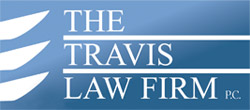
Fearful of Driving After a Car Accident

Vehophobia After a Car Accident
Fear of driving after a traffic accident is more common than you may think. It’s called vehophobia and affects a significant portion of car accident victims. When they get behind the wheel, these drivers experience severe anxiety accompanied by physical symptoms such as a fast heart rate, and they may be unable to drive. Since more than six million traffic accidents occur each year, there is no question this affliction is frequently a reaction to a car accident. Let’s discuss this emotional/psychological response to a prior car accident, the effect it has on the person’s daily life, its symptoms and treatment.
What Is Fear of Driving?
While some people are fearful of driving for different reasons and not all individuals who are afraid to drive were in a car accident, many have been involved in a vehicular crash. This fear may be inclusive and prevent the person from driving entirely. For others, the fear centers on specific types of driving, such as freeway travel or in a certain neighborhood. Many people who were in an accident embrace Uber as their main form of transportation because of vehophobia.
Is Vehophobia Post-Traumatic Stress Disorder?
Yes, it is. When vehophobia controls the way you react to driving or keeps you from driving, it is diagnosed as a form of PTSD. This psychological response is composed of a cluster of symptoms such as:
- Tense muscles
- Chest pain
- Breathing difficulty
- Sweating
- Increased heart rate
- Nausea
- Shallow breathing
- Panic attacks
- Fear of being in an accident
- Making excuses about driving
Are There Other Causes of Fear of Driving?
There are many causes of vehophobia, however, being in a car accident is still the most prevalent. Some of the other causes are:
- Family history of fear of driving
- Being made fearful by driving instructors
- Seeing an accident
- Watching a movie with horrific accident scenes
- Witnessing an animal running into traffic and being struck by an automobile
- Driving in inclement weather such as a snowstorm or a downpour
- Being the recipient of road rage
- Being in an accident in the past with serious injuries
Compensation for PTSD
The person who experiences fear of driving can claim compensation. It is necessary to be diagnosed with PTSD by a medical professional and to present this information to your personal injury lawyer. Having the condition verified is just the first step. After this, the plaintiff must be able to show how PTSD affects their life, home and work. In some cases, it may threaten the person’s employment such as what would happen if the injured party drove for a living.
How Is Fear of Driving Treated?
Treatment for PTSD revolves around three different modalities, according to the Mayo Clinic, These are:
- Cognitive therapy: This treatment explores the way the person thinks and how some thoughts enhance PTSD. It looks for a pattern of thought that won’t let you get past this time in your life and uses conversation to do just that.
- Exposure therapy: This type of therapy puts you back in the driver’s seat. While doing that prior to successful treatment is not advantageous, the use of virtual programs that simulate driving is a healthy way to do this.
- Eye movement desensitization and reprocessing: EMDR is a combination of exposure therapy and using eye movements to reprocess memories and the way the fearful driver processes them.
Travis Law Firm in Erie, Pennsylvania
At the Travis Law Firm, you will experience compassionate and professional help when PTSD is a problem after an accident. Call us at (814) 277-2222 to schedule a free consultation. If it is easier for you, you can also contact us online. We will help you obtain compensation for all types of injuries. Don’t let a defendant steal your right to receiving damages after being physically injured.
